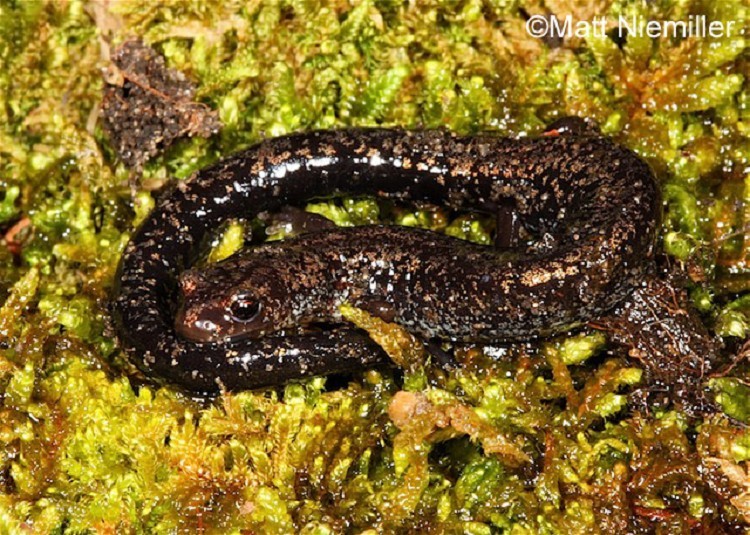Southern Ravine Salamander
Plethodon richmondiThe Southern Ravine salamander occurs in the northern portions of the Blue Ridge Mountains, Appalachian Ridge and Valley, and Cumberland Mountains, usually at higher elevations.
Description: A long, slender salamander (3.0 to 5.0 inches in length) with short legs and a long tail. The back color is dark brown to black with very fine silvery-white to brassy specks. The belly is uniformly dark with a lightly mottled chin.
Similar Species: Eastern Red-backed Salamander has a salt-and-pepper patterned belly. Northern and Southern Zigzag Salamanders have red or orangish colors on the belly. Wehrle’s and Red-cheeked Salamanders have larger legs and are more stout-bodied.
Habitat: Found under rocks, logs, and leaf litter of sloping to steep, upland forests and ravines.
Diet: Small insects including spiders, ants, mites, slugs, earthworms, and beetles.
Breeding information: Adults breed between fall and spring in terrestrial habitats. Females lay eggs deep in underground cavities during the spring. Females most likely brood eggs until hatching.
Status in Tennessee: Population abundance is not well known due to the small range in Tennessee. Vulnerable to loss of habitat from deforestation and development.
Fun Facts:
- Salamanders in the Plethodontidae family do not have lungs; gas exchange occurs entirely through their skin.
Best places to see in Tennessee: Mid to steep slopes of northeast TN forests.
